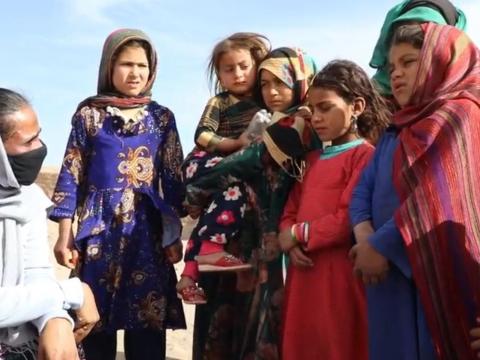World Must Act Now to avoid failing the children of Afghanistan

As power dynamics change by the hour across Afghanistan, International aid agency World Vision warns that countless more vulnerable children will pay the ultimate price as they are caught in the maelstrom. At terrifying speed, territories and control are changing, schools are closed, food is scarce and forced displacement figures are soaring. Children and families are in hiding or fleeing and their fundamental rights are being denied.
The numbers are staggering.
Almost half the population – 18.4 million people (8.2 million children) – have needed humanitarian and protection assistance in 2021 and this is growing. An acute food insecurity crisis is faced by more than 30% of the Afghani population (12.2 million). Accelerated forced displacement is projected to result in 500,000 people fleeing across various provinces by the end of the year[1]. The pandemic continues to worsen, and preventative measures are lacking. In a country with a population of close to 40 million, so far only 139,051 COVID-19 cases and 6,098 deaths were reported since February 2020[2].
“Extreme vulnerabilities and fear are at record levels and children are at greater risk of violence, abuse and exploitation. Families who are already struggling to survive destitution related to this conflict, a devastating drought and the effects of COVID-19, are now resorting to the most desperate of measures to protect their children, including child marriage. History has shown that the resilience and fortitude of the Afghan people is extraordinary. But it has its limits. They are now at their most vulnerable and we cannot abandon them now.” says National Director Asuntha Charles.
World Vision calls for all parties to the conflict to put vulnerable children first. International humanitarian law must be respected and the lives of Afghan children, their families, and communities prioritised. The international community must maintain its presence on the ground to prevent an unprecedented humanitarian catastrophe. Further commitment must be made to increased and sustained funding supports, diplomatic engagement, international responsibility for durable solutions, and the protection of child rights.
“Children are the single greatest asset to any sustainable, durable solution to multiple crises. For their sake, all sides must put the humanitarian needs of their people first and end this conflict. Together with our +300 Afghan staff, World Vision will stay and deliver.” Ms. Charles said.
-Ends -
Notes:
For the past 20 years, through a range of holistic, integrated humanitarian projects that promote change and improve well-being, World Vision has been serving the children, families, and communities in Afghanistan. Every year, over 488,600 children and adults' benefit from World Vision Afghanistan’s programs, which currently operate in four provinces and cities throughout Afghanistan.
For more information, please contact:
- Asuntha Charles, Afghanistan National Director, Herat GMT+ 4.5
- Johnathan Chifamba, Operations Director, Herat GMT+ 4.5
- Eleanor Monbiot, Regional Leader, MEERO, Cyprus GMT+ 2
- Leah Donoghue, Regional Communications and Advocacy Director, Jordan GMT+ 2
[1] Source: UN OCHA https://reliefweb.int/sites/reliefweb.int/files/resources/afg-cost-of-inaction-20210704-v02.pdf
[2]Source: WHO Situation Report Afghanistan 1-15 July, 2021 https://reliefweb.int/sites/reliefweb.int/files/resources/afghanistan-covd-19-situation-report-1-15-july-2021.pdf